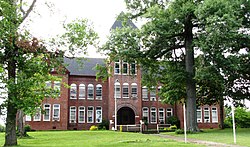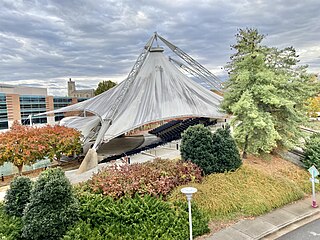
Knoxville is a city in and the county seat of Knox County, Tennessee, United States. As of the 2020 United States census, Knoxville's population was 190,740, making it the largest city in the East Tennessee Grand Division and the state's third-most-populous city after Nashville and Memphis. It is the principal city of the Knoxville metropolitan area, which had a population of 879,773 in 2020.

Fisk University is a private historically black liberal arts college in Nashville, Tennessee. It was founded in 1866 and its 40-acre (16 ha) campus is a historic district listed on the National Register of Historic Places.

Seton Hall University (SHU) is a private Roman Catholic research university in South Orange, New Jersey. Founded in 1856 by then-Bishop James Roosevelt Bayley and named after his aunt, Saint Elizabeth Ann Seton, Seton Hall is the oldest diocesan university in the United States.

Mississippi College (MC) is a private Baptist university in Clinton, Mississippi. Founded in 1826, MC is the second-oldest Baptist-affiliated college or university in the United States and the oldest college or university in Mississippi.
Bethel University is a private Cumberland Presbyterian-affiliated university in McKenzie, Tennessee with satellite campuses in Jackson, and Paris. It is accredited to award degrees up to the master's level.

Maryville College is a private liberal arts college in Maryville, Tennessee. It was founded in 1819 by Presbyterian minister Isaac L. Anderson for the purpose of furthering education and enlightenment into the West. The college is one of the 50 oldest colleges in the United States and the 12th-oldest institution in the South. It is associated with the Presbyterian Church (USA) and enrolls about 1,100 students. Its mascot is the Scots, and sports teams compete in NCAA Division III athletics in the Collegiate Conference of the South.

Victor Henderson Ashe II is an American former diplomat and politician who served as United States Ambassador to Poland. From 1987 to 2004, he was mayor of Knoxville, Tennessee. Ashe is a Republican. Ambassador Ashe concluded his service as Ambassador to Poland on September 26, 2009.

The University of Tennessee System is a system of public universities in the U.S. state of Tennessee. It is one of two public university systems, the other being the Tennessee Board of Regents (TBR). It consists of four primary campuses in Knoxville, Chattanooga, Pulaski and Martin; a health sciences campus in Memphis; a research institute in Tullahoma; and various extensions throughout the state.

The University of Tennessee Health Science Center (UTHSC) is a public medical school in Memphis, Tennessee. It includes the Colleges of Health Professions, Dentistry, Graduate Health Sciences, Medicine, Nursing, and Pharmacy. Since 1911, the University of Tennessee Health Science Center has educated nearly 57,000 health care professionals. As of 2010, U.S. News & World Report ranked the College of Pharmacy 17th among American pharmacy schools.

Johnson University is a private Christian university with its main campus in Kimberlin Heights, Tennessee, and a second campus in Kissimmee, Florida. It is affiliated with the Christian churches and churches of Christ, a branch of the Restoration Movement.

Hiwassee College was a private liberal arts college in Madisonville, Tennessee. Founded in 1849, the college offered associate degrees as well as bachelor's degrees. The majority of its associate degree graduates went on to complete bachelor's degrees elsewhere. The college closed on May 10, 2019 due to financial issues.
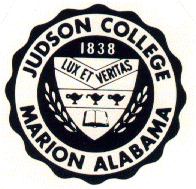
Judson College was a private women's college in Marion, Alabama. It was founded in 1838 and suspended its academic operations on July 31, 2021.

Benedict College is a private historically black college in Columbia, South Carolina. Founded in 1870 by northern Baptists, it was originally a teachers' college. It has since expanded to offer majors in many disciplines across the liberal arts. The campus includes buildings in the Benedict College Historic District, a historic area listed on the National Register of Historic Places.
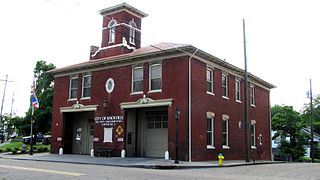
Mechanicsville is a neighborhood in Knoxville, Tennessee, United States, located northwest of the city's downtown area. One of the city's oldest neighborhoods, Mechanicsville was established in the late 1860s for skilled laborers working in the many factories that sprang up along Knoxville's periphery. The neighborhood still contains a significant number of late-19th-century Victorian homes, and a notable concentration of early-20th-century shotgun houses. In 1980, several dozen properties in Mechanicsville were added to the National Register of Historic Places as the Mechanicsville Historic District. The neighborhood was also designated as a local historic district in 1991, subject to historic zoning and design standards.
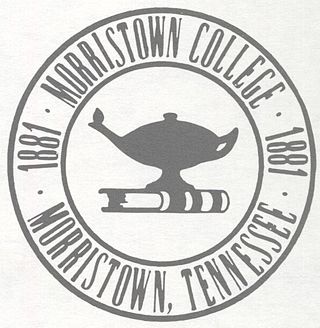
Morristown College was an African American higher education institution located in Morristown, the seat of Hamblen County, Tennessee. It was founded in 1881 by the national Freedman's Aid Society of the Methodist Episcopal Church. The school was renamed Knoxville College-Morristown Campus in 1989 and closed in 1994. Prior to the civil rights movement, the college held the distinction of being one of only two institutions in East Tennessee for African Americans, the other being Knoxville College, founded in 1875.
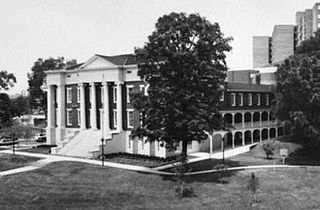
Old City Hall is a complex of historic buildings located at 601 West Summit Hill Drive in Knoxville, Tennessee, United States. Originally constructed in 1848 as the Tennessee School for the Deaf and Dumb, the complex served as Knoxville's city hall from 1925 until 1980. The complex has been listed on the National Register of Historic Places and has been documented by the Historic American Buildings Survey. It currently houses Lincoln Memorial University's Duncan School of Law.
Tennessee Military Institute (TMI) was a military academy in Sweetwater, Tennessee.
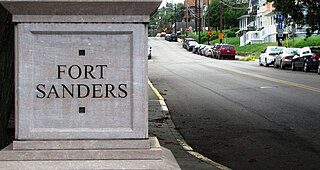
Fort Sanders is a neighborhood in Knoxville, Tennessee, USA, located west of the downtown area and immediately north of the main campus of the University of Tennessee. Developed in the late 19th century as a residential area for Knoxville's growing upper and middle classes, the neighborhood now provides housing primarily for the university's student population. The neighborhood still contains a notable number of its original Victorian-era houses and other buildings, several hundred of which were added to the National Register of Historic Places in 1980 as the Fort Sanders Historic District.

The University of Tennessee, Knoxville is a public land-grant research university in Knoxville, Tennessee. Founded in 1794, two years before Tennessee became the 16th state, it is the flagship campus of the University of Tennessee system, with ten undergraduate colleges and eleven graduate colleges. It hosts more than 30,000 students from all 50 states and more than 100 foreign countries. It is classified among "R1: Doctoral Universities – Very high research activity".

The East Tennessee Female Institute was an all-female institution of higher learning that operated in Knoxville, Tennessee, United States, from 1827 until 1911. Originally chartered as the Knoxville Female Academy, the school offered high school and college-level courses to the women of Knoxville and surrounding counties in the years before the University of Tennessee became coeducational. With the rise of free public education in Knoxville in the early 1900s, enrollment at the institute, which was tuition-based, gradually declined.





